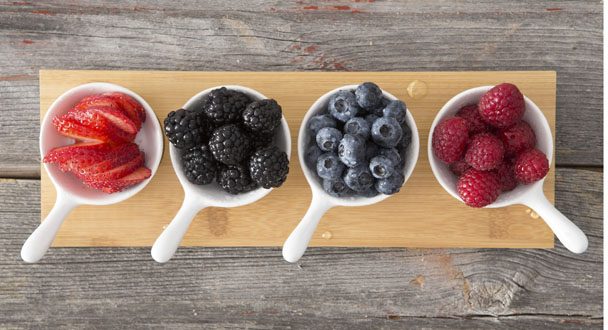With an ongoing stretch of hot summer days, it’s important for everyone to ensure that they consume plenty of fluids to stay hydrated. Without adequate fluid intake, you might become dehydrated, which can lead to tiredness, weakness, headache and dizziness. People at the highest risk of dehydration in hot weather are children and the elderly.
For people with diabetes, special attention should be paid to ingesting plenty of fluids, because dehydration can cause your blood glucose levels to rise, and can also harm your kidneys and increase your risk of nerve damage.
Canada’s Food Guide suggests that people should primarily drink water when they’re feeling parched, because it satisfies your thirst and promotes hydration, without adding calories to your diet. Because your body naturally loses water throughout the day – especially in the summer – these fluids must be replaced.
There’s no magic amount for how much fluid intake you should have each day, but if you’re heading to the bathroom every two to four hours, you’re on the right track.
So, what are some healthy tips for staying hydrated in the summer?
Water
- Carry a drink bottle for easy access when you are at work or running errands. They come in all shapes and sizes, so find one that fits easily into your briefcase or handbag.
- Choose water instead of sugar-sweetened beverages. Substituting water for one 20-ounce bottle of sugar-sweetened pop will save you about 240 calories.
- Give your water a little pizazz by adding a wedge of lime or lemon. This really jazzes up the taste, so you just might drink more water than you usually do.
Other beverages
- A cold glass of milk can be quite refreshing on a hot day. Canada’s Food Guide recommends that people drink 500 mL (2 cups) of milk every day for adequate vitamin D; lower-fat milk choices are recommended (for example, skim or 1% milk).
- Fruit juice, while refreshing, should be consumed in moderation, as it often contains a fair bit of sugar and is low in fibre. That said, Canada’s Food Guide does support moderate consumption of fruit juice. For a refreshing drink, combine soda water with orange or cranberry juice – 2 parts soda to one part juice – for an incredibly refreshing summer drink.
Fruits and vegetables
- Canada’s Food Guide recommends that adult women consume 7 to 8 servings of fruit and vegetables each day, and that adult men consume 8 to 10 servings per day. Fruit and vegetables are excellent sources of fluids:
- Zucchini, radish, tomatoes and celery are comprised of 95% water. Vegetables that contain 92% water include cauliflower, eggplant, red cabbage, peppers, spinach and broccoli.
- Grapefruit, strawberries, watermelon and cantaloupe are comprised of about 92% water, while oranges, grapes and cherries are approximately 85% water. - Remember, though, some fruits can contain a lot of sugar, so aim for 3 to 4 servings of fruit, and 4 to 6 servings of veggies each day. One serving of fresh, frozen or canned vegetables or fruit equals 125 mL, or about ½ cup, according to Canada’s Food Guide.
For more tips on healthy summer drink ideas, click here.
 Diabetes Care Community Learn, connect and care
Diabetes Care Community Learn, connect and care




